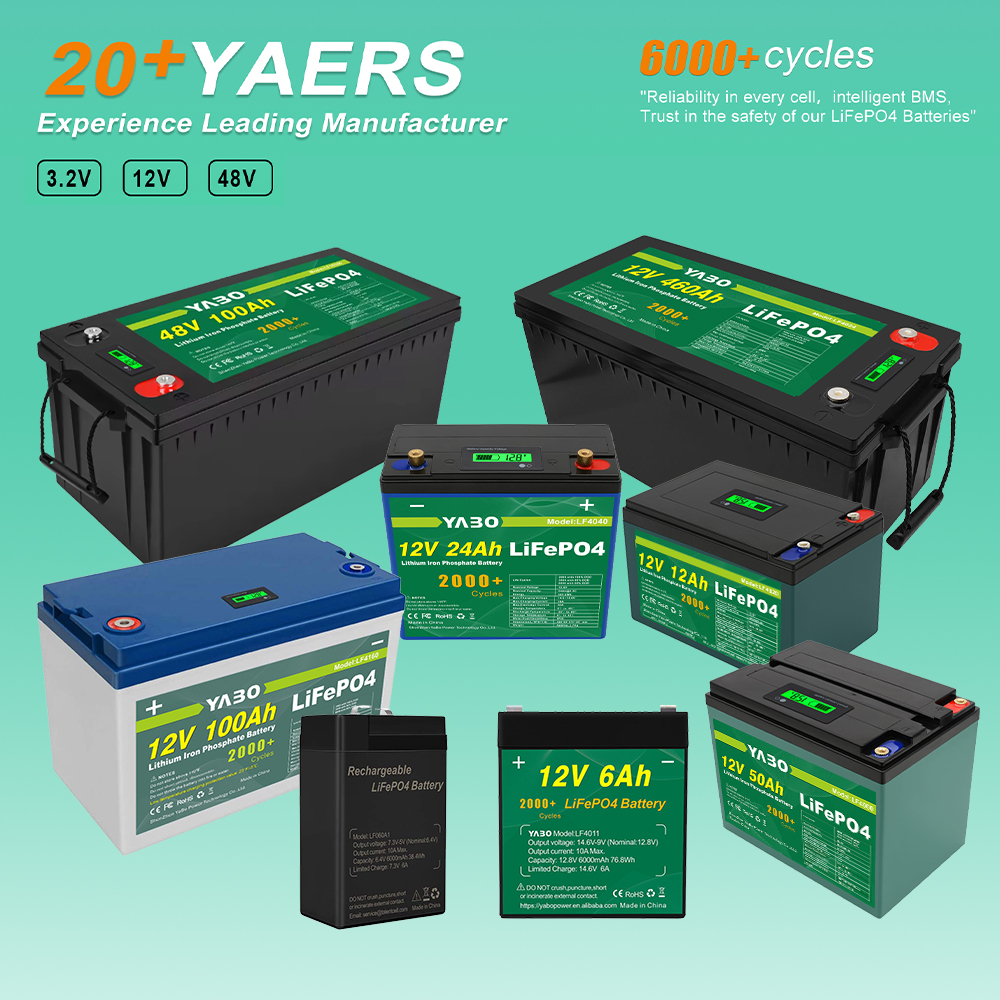






What Affects the Power Output of a 12V 100Ah LiFePO4 Battery
What Affects the Power Output of a 12V 100Ah LiFePO4 Battery?
1. Battery Voltage (State of Charge - SoC)
LiFePO4 batteries maintain a relatively flat voltage curve throughout discharge, typically ranging between 12.8V to 13.6V when charged and around 12V when nearly empty.
The power output decreases slightly as the battery discharges because of this drop in voltage, but the flat discharge profile ensures consistent power delivery over most of the charge.
2. Discharge Rate (C-Rate)
LiFePO4 batteries are capable of high discharge rates, often up to 1C (100A continuous) or more, depending on the specific model.
At higher discharge rates, internal resistance causes some heat and a small voltage drop, slightly reducing power output.

3. Temperature
·Optimal Range: LiFePO4 performs best between 0°C to 40°C (32°F to 104°F).
·Cold Temperatures: At temperatures below 0°C (32°F), chemical activity slows down, reducing power output.
·Hot Temperatures: High temperatures (>40°C) can increase internal resistance, reducing efficiency and possibly damaging the battery over time.
4. Internal Resistance
LiFePO4 batteries have low internal resistance, which minimizes voltage drops even under high loads. However:
5. Battery Management System (BMS)
A built-in Battery Management System (BMS) regulates power output and protects against:
·Overcharge
·Over-discharge
·Overcurrent
·Over-temperature
If the battery approaches its operational limits, the BMS may reduce or cut off power to prevent damage.
6. Load Characteristics
Resistive Loads (e.g., lights, heaters): Draw constant power and perform predictably with LiFePO4.
Inductive Loads (e.g., motors, compressors): Require high starting currents (inrush current), which the battery can handle, but may momentarily cause a voltage drop.
7. Depth of Discharge (DoD)
LiFePO4 batteries can safely handle deep discharges (up to 80-100% DoD) without significant performance loss or long-term damage.
Unlike lead-acid batteries, their power output remains consistent even at high DoD.
8. Aging and Cycle Life
LiFePO4 batteries typically offer 2,000–5,000 cycles or more, depending on the discharge depth and care.
As the battery ages, capacity and maximum power output gradually decline, but this degradation is much slower compared to other chemistries.
9. Connection Quality
Poor connections or thin cables can increase resistance, causing voltage drops and reducing power output.
10. Inverter orDevice Efficiency
If used with an inverter, the efficiency of the inverter will affect the usable power. For example, a 90% efficient inverter will reduce the power available for AC loads.
Calculating Power Output
The power output (in watts) can be calculated as: P=V×I Where:
VV is the battery voltage (typically 12.8V to 13.6V for LiFePO4),
II is the current draw in amps.
For example:
At full charge with a 50A load:
P=13.2×50=660 W
At a low charge with a 50A load:
P=12.0×50=600 W
Summary
LiFePO4 batteries are known for their stable and efficient power output. They are less affected by discharge depth, aging, and high loads compared to lead-acid batteries. However, temperature, load type, and BMS protections are the key factors that influence their power output. Proper care and operation within the recommended specifications will ensure consistent performance.
----author: Valarie








